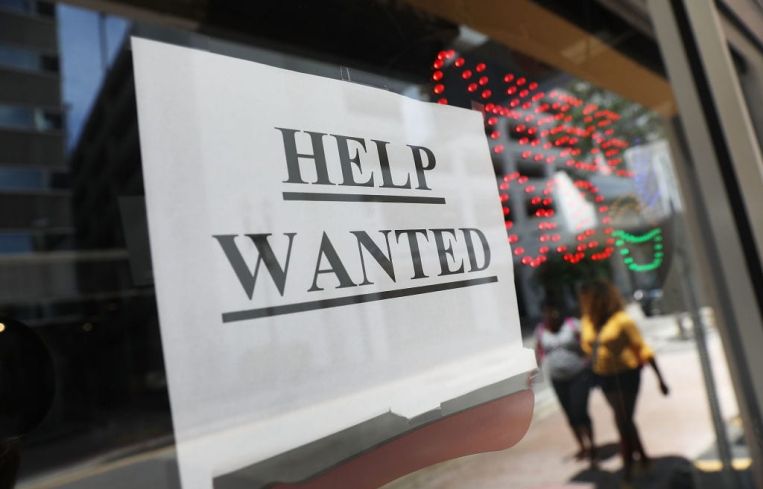US Added 266K Jobs in April, a Dramatic Slowdown From March Growth
By Celia Young May 7, 2021 11:41 am
reprints
U.S. employers added 266,000 jobs in April, a slowdown from the 770,000 jobs added in March, which defied the expectations of economists and left the jobless rate at 6.1 percent, The New York Times first reported.
Job gains were focused in the leisure and hospitality sectors, as pandemic restrictions eased nationally, according to the U.S. Bureau of Labor Statistics report. Most of the gains in that sector were from food services and drinking establishments as Americans returned to restaurants, thanks to increased vaccinations rates and warmer weather for outdoor dining. Local government education, federal government employment, and employment in the financial sector also increased.
Those gains were offset, however, by declining employment in couriers, messengers, temporary help services and a slight dip in manufacturing — leaving the unemployment rate slightly higher than March.
Growing vaccinations, coronavirus relief packages and near-zero interest rates are helping to speed a recovery, Jerome Powell, chair of the Federal Reserve, said in a press conference last week.
Powell also drew attention to the racial disparity in the job numbers.
The unemployment rate for Black Americans is at 9.7 percent, far higher than the 5.3 percent for whites. The racial disparity exists for both Hispanic Americans, at 7.9 percent, and Asians, at 5.7 percent. Women, however, saw a lower unemployment rate of 5.6 percent compared to 6.1 percent for men.
“The economic downturn has not fallen equally on all Americans, and those least able to shoulder the burden have been the hardest hit,” said Powell in a press conference. “In particular, the high level of joblessness has been especially severe for lower-wage workers in the service sector, and for African Americans and Hispanics. The economic dislocation has upended many lives and created great uncertainty about the future”
Nationally, 9.8 million people are unemployed, down from April 2020’s high, but still a far cry from the 5.7 million people, or 3.5 percent unemployment rate, in February 2020 before the pandemic hit the country.
Labor force participation rate increased for the past two months, rising to from 61.4 percent in February to 61.7 percent in April.
And more people are leaving their home offices as employers increasingly start calling employees back to the office. The number of people working from home due to the pandemic was down from 21 percent in March to 18.3 percent of employees in April.
As the economy recovers, some employers in the restaurant and hospitality are saying they can’t find workers, despite the high unemployment rates, and have blamed emergency pandemic relief programs and government benefits, reported the Times. But a key indicator of a shortage of workers is rising wages, which Powell has said has not happened.
“Clearly, there’s something going on out there, as many companies are reporting labor shortages,” Powell said. “We don’t see wages moving up yet, and presumably, we would see that in a really tight labor market.”



